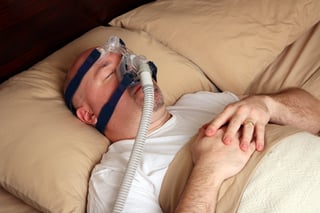 Sleep specialists generally speak about CPAP in a very positive light, and with good reason.
Sleep specialists generally speak about CPAP in a very positive light, and with good reason.
For hundreds of thousands of people, CPAP is a life-saving therapy for controlling obstructive sleep apnea (OSA).
However, while for some, CPAP is a perfect fit from the very first night, others need time to adjust, and they commonly experience side effects from the PAP therapy that give them discomfort.
There's no need to gloss over any of these common problems with using CPAP therapy; they all have explanations as well as solutions.
In this CPAP Con Spotlight, we'll take a look at 4 common concerns.
Sinus infections
These can happen as the result of using CPAP, or they can happen for other reasons, making it difficult to use CPAP comfortably.
Sinus infections caused by using CPAP
This happens because of maintenance and cleaning issues with your CPAP machine.
Sinus infections often result from not disposing of and replacing the CPAP filters on the machine every month. The interior, fixed filters must also be kept clean on a regular schedule.
Also, not keeping your humidification chamber, mask, or tubing clean can also increase your chances of breeding molds, bacteria, or other microorganisms that could be giving you sinus trouble.
Solution: Keep your equipment clean on a regular schedule and, failing that, ask your DME to look at your machine to see if there is any development of mold on the interior.
Sinus infections which make using CPAP difficult
You could also develop a sinus infection that has nothing to do with CPAP use. In this case, using CPAP might only exacerbate your symptoms. The air pressure may aggravate the tissues in the sinuses, ears, and throat, as well as the air itself, especially if it is dry.
Solution: Contact your DME supplier and ask them whether you should use your CPAP if you have a sinus infection.
"Rainout"
This is the term used to described problems with dripping condensation in the tubing used with your CPAP device.
Most CPAP machines incorporate a humidification chamber to help deliver air that is moist and warm.
This is meant to provide you with maximum comfort. However, it could also result in excessive moisture buildup in your CPAP tubing, which can breed bacteria and could also be inhaled accidentally if allowed to enter the CPAP mask during use.
Solution: Heated CPAP tubing helps keep the problems with condensation down, especially if you sleep in a cooler room (which is usually recommended) while using your therapy.
However, you can also purchase a fleece CPAP tube insulator (see picture) to help improve insulation of the tubing and pressurized air.
Also, make sure your CPAP machine itself is placed on a nightstand that is lower than the level of your head while you sleep. This allows for gravity to work in your favor; a CPAP machine set higher than your head will drain condensation directly into your mask, which is uncomfortable, if not dangerous.
Finally, keep your tubing clean and dry between uses if you experience rainout, as this helps prevent the growth of microorganisms that can lead to health problems later.
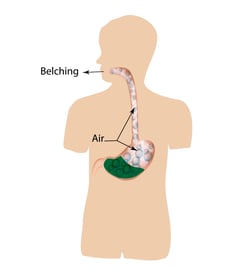
Gassiness
After a night on CPAP, you might experience bloating, excessive belching, or flatulence; all of these are signs of something called aerophagia, more commonly referred to as "swallowing air."
This is a common problem with first-time CPAP users. Some of the reasons this happens include:
-
Oral breathing. If you breathe through the mouth while using a nasal CPAP mask, you will introduce extra air into the esophagus, which has nowhere else to go but into the stomach.
Solution: Use a chin support to keep your mouth closed while you sleep; it will improve your symptoms of gassiness as well as make your PAP therapy more effective.
-
Incorrect pressure settings. Sometimes the problem develops if the setting on the CPAP is incorrect and you get either too much or too little pressurized air.
Solution: Double check your pressure settings; it may require you to take your machine into the DME, but it will be worth it if it means you don't wake up feeling bloated every morning.
-
Poor mask fit. This can also result in air swallowing; the seal between the mask and the surface of the face must not be too loose nor too tight.
Solution: Don't overtighten your mask; this can compromise the seal and the effectiveness of your PAP therapy. If the mask is too loose, tighten it only until it lightly rests on your face; the addition of pressurized air generally improves the seal on its own.
If your mask seems too big or too small, contact your DME. They can set you up with a different style or size, as necessary.
-
Anxiety. People who have trouble with claustrophobia may hyperventilate while using the mask, which increases the chances for aerophagia.
Solution: Learn some relaxation and breathing techniques to help you calm yourself at bedtime. "Practice does make perfect" when it comes to using CPAP, and if you give it your best effort, you will see the results in less bloating and better sleep over time.
Other solutions to treat or prevent aerophagia
Raise the head of your bed by three inches (stacking risers or wood blocks under the feet works). Sometimes this slight shift in posture while sleeping improves the airway posture, making it easier to breathe using CPAP, reducing chances you will swallow air.Try a different machine. Sometimes people with higher pressures simply need more advanced settings to manage their breathing patterns. Discuss this possibility with your sleep specialist; insurance may have restrictions on what machines you can use, but if aerophagia is a constant problem, that might be enough to set you up with a different kind of PAP device.Drink carbonated water in the morning. This is a natural way to help break up trapped gas after a night of using CPAP.
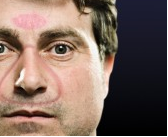
Facial marks
Some people wake up with distinctive red markings on their face after a night of CPAP.
Using CPAP often leads to a slight amount of swelling in the skin; matched with an overtight mask, the result are "sleep marks" which can take some time to go away.
Also, people with sensitive skin might find these markings are the result of a skin allergy or intolerance to the materials of the mask.
Solution: If you have a sensitivity to certain kinds of materials, you can ask for special mask liners or face pads made of gentle products that won't irritate skin.
If you aren't sensitive to the mask materials, you are likely overtightening your mask, which compromises the quality of your PAP therapy delivery. Contact your DME to discuss the problem; they can help you decide whether it's a mask fit, style, or size issue or whether it's related to the product materials.
If you are struggling with CPAP, please know that there are solutions as well.
Your success with CPAP depends upon you making the most of your therapy, and that means having a regular conversation with your DME about issues with your equipment, staying on top of cleaning and maintenance schedules, and sharing when you're struggling with PAP.
The DME exists to help you with all your PAP needs; never hesitate to contact them with questions or concerns, they are there to help you stay on track with your therapy.


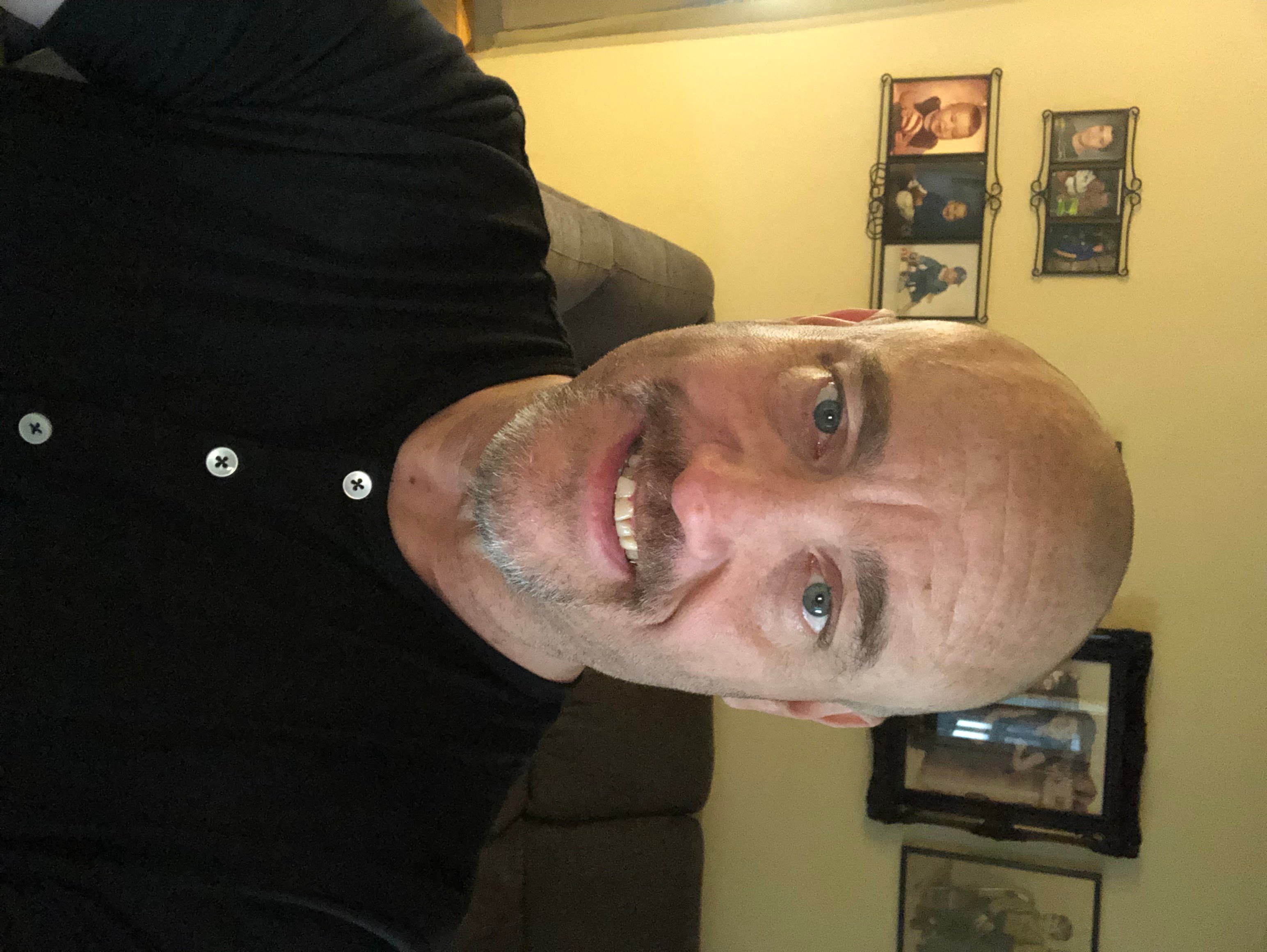
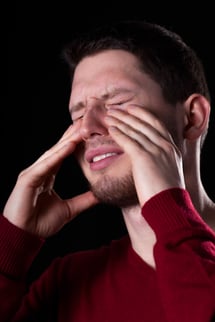
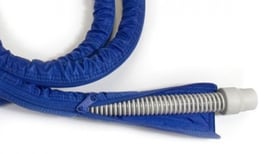







Leave a comment